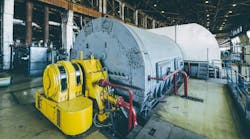New Technology to Better Remove Heavy Metals from Industrial Waters
Many industrial locations across the nation produce large amounts of wastewater effluent containing a number of heavy metals harmful to public health and the environment. Along with other manufacturing residual, these impurities are some of the most common and can permeate groundwater, pollute local waterbodies and contaminate drinking water.
These metals include everything from mercury, lead and arsenic to nickel, uranium and aluminum, and are discharged from operating processes as a result of inefficient treatment techniques. Further, their presence in water resources has increased in recent years and has become a growing concern among industry leaders.
However, a new chemical-based technology being developed by Siemens Water Technologies and Texas A&M AgriLife Research purports to more efficiently and cost-effectively remove these heavy metals from water and wastewater at power utility, mining, refinery, and remediation sites.
"We are excited to partner with Siemens," said John Sharp, A&M System chancellor, in a recent press release, "to commercialize and advance this technology, which could have significant benefits to water and wastewater treatment."
The technology is based on an Activated Iron Process for the removal of contaminants from water and wastewater developed by Dr. Yongheng Huang, associate professor of biological and agricultural engineering at Texas A&M University. Dr. Huang recently received the Water Environment Federation's 2013 Rudolfs Industrial Waste Management Medal at the association's WEFTEC event in October. Dr. Huang is also an AgriLife Research scientist.
"I am working side by side with Siemens on a scale much larger than previous bench-top and pilot scale activities I have conducted," said Dr. Huang. "Expanding the research in this area has already produced exciting results and findings that strengthen the application of the technology."
In a single process unaffected by temperature or pH levels, the commercialized system is being designed to occupy a smaller footprint than current remediation treatment systems to reduce capital expense and to operate more efficiently in a wider range of environments. Likewise, both organizations are seeking to generate a technology that will actively meet overall National Pollutant Discharge Elimination System (NPDES) limits at industrial locations.
"The industrial applications for this new technology are far-reaching," said Dr. Lukas Loeffler, Siemens Water Technologies CEO. "From flue gas desulfurization water treatment for power utilities to heavy metals removal from HPI/CPI and mining wastewater to remediation, there is a clear need for a cost-effective solution unaffected by temperature or pH levels."
According to a recent review by the Institute for Economic Research on Innovation, at least 20 existing metals have been categorized as toxic -- with lead, mercury, arsenic and cadmium linked most often to human poisoning. While other metals such as copper, zinc, and chromium are required for the proper functioning of the body in small amounts, they can also be toxic in larger doses.
The study further indicated that half of these heavy metals are being released into the environment through inefficient drinking water distribution and wastewater effluent systems in concentrations that pose a significant threat to public health. As such, there is growing interest in remediation processes and technologies, such as the one being pioneered by Siemens and AgriLife, as a means to combat this pollution.
"Industrial operators are seeking new solutions to meet heavy metal remediation challenges and regulatory requirements," said Loeffler in a recent press release. "The agreements between AgriLife Research and Siemens Water Technologies will help develop a solution to meet this need."
Within the next several months, both organizations anticipate increased progress of the technology. "AgriLife Research looks forward to further developing and commercializing its novel chemical process and reactor," said Dr. Craig Nessler, AgriLife Research director in the same press release. "We are confident that our partnership with Siemens will yield environmental and economic benefits across multiple industries."



